"Growth hacking" is one of those buzzwords that product people tend to have strong feelings about. Everyone talks about it, everyone claims that they are doing it...but I'm yet to see any real tangible results coming from their efforts.
So, you might naturally wonder if growth hacking is even for real or if it's just a cool word that marketing and product podcasters use to describe themselves.
The quick answer is—yes. Growth hacking is something real and very valuable for your product and company...if you do it right.
Now for the long answer, which will just be me regaling you with famous success stories of companies who have implemented growth hacking strategies and significantly increased their user bases.
Example #1: Facebook’s Badges for Bloggers
There's a reason I'm starting with Facebook's growth hacking story, as this is where the concept of growth teams and professionals started.
It was back in 2007. Facebook was already quite popular among university students and their peers. Mark Zuckerberg, however, had much bigger ambitions. He wanted everyone to become a Facebook user. So, he did something unique at the time.
Instead of letting his product, marketing, engineering, and sales teams live and work in their silos, he created a new department where people from each “silo” were present and pursued a common goal of focusing on tasks and efforts that could help Facebook grow its user base.
Meet Chamath Palihapitiya.
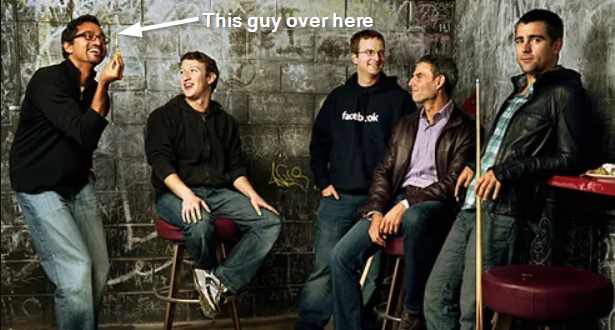
He was a senior Facebook executive who led the newly-formed team and essentially became the first growth hacker in history.
Chamath’s and Mark’s experiment with forming this team was a massive success, as they ended up significantly increasing the user base of Facebook and hit a milestone of 1 billion within only four years.
One of the most prominent tactics that Chamath and his team employed to boost growth at Facebook was the use of embeddable badges. Facebook would provide you with a small HTML code snippet that included a hyperlink to your profile on the social network as well as a bit of Facebook branding on it.
It was quite popular among internet influencers of that age who would place these badges on their blogs or websites and prompt their audience to read their content on Facebook too.
These badges helped Facebook acquire new users in two ways. Firstly, all of the blog visitors would be exposed to the logo and branding of Facebook - increasing brand awareness. Secondly, and most importantly, the people who would open the profile of their favorite blogger on Facebook would be prompted to sign up to be able to befriend them.
Takeaway: You can piggyback on the trust and reputation of your users.
This is a tactic known as "social proof." One of the key reasons people choose to sign up for a specific product is their trust in it. In the early years of Facebook, it was not yet popular and brand awareness was still weak. This meant that people did not consider Facebook as a platform with the necessary level of trust and authority to sign up for it.
They did, however, trust their favorite bloggers and internet celebrities. So, Facebook decided to use the psychology of Social Proof to increase its trustworthiness. For ordinary blog readers, if their favorite celebrity was on Facebook, then it must have been a good/cool/trendy social media platform worth signing up for.
Example #2: Dropbox’s Infamous “Invite Your Friend For Extra Storage” Referral Strategy
The second company I want to talk about is quite famous among product managers and growth hackers for running arguably the most successful referral program in the industry.
I'm talking about good old Dropbox. The pioneer SaaS company is famous for providing you with extra storage if you invited your friends to sign up for their cloud storage service. The idea was that Dropbox had a lot of free users who did not have the necessary amount of files to upload and store to become a paid user. So, they were essentially “dead weight” from the monetization standpoint.
With this referral strategy, however, Dropbox was able to benefit from these free users by letting them do the acquisition of new users for Dropbox in exchange for extra free space. For the free tier users, this was an excellent deal and they were more than happy to ask their friends and family to sign up for Dropbox.
What I really love about this referral program is that Dropbox would give extra space not only to the person who invited their friends but also to the friends themselves who accepted the invitation.
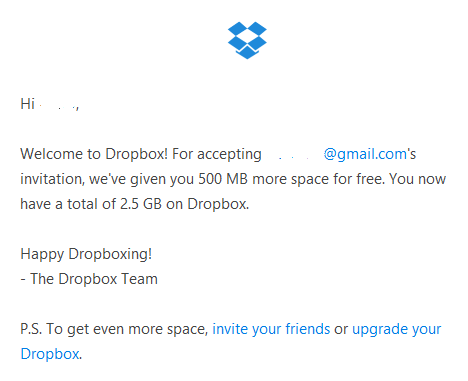
This was creating a win-win situation and gave the potential new users a good incentive to accept the invitation and sign up for this service.
Takeaway: Make sure that you offer everyone a fair exchange of value.
There were three parties involved in the referral program—the existing users who were sending out invitations, those who accepted these invitations, and Dropbox itself. The beauty and the genius behind the model developed by the company was that everyone involved was getting some kind of benefit from the referral.
Dropbox was getting new users while both the old users and new users were getting extra storage. Would people share Dropbox with their friends if there was no incentive? Probably. Would their friends accept the invitation and sign up? Again, probably.
But they would not be many of them and this rate would not let Dropbox hit their growth targets. With the incentives, on the other hand, everyone had an extra bit of motivation to take part in the referral program.
The second aspect that we need to take into consideration is the “fair exchange of value”. The incentives Dropbox provided were quite lucrative in the eyes of its users. If Dropbox were to offer an extra 50MB instead of 500 per referral, it would not look like a fair exchange for the users and they would not bother to invite their friends.
Example #3: Dollar Shave Club’s Viral Promo Video
So far, I have talked about growth strategies that were relatively novel back in the day. This one, however, used a digital marketing channel and lead generation approach that seemed to be “cliche”—publishing video marketing content and taking it viral through social sharing. The novelty here, however, was the great execution of this strategy.
Dollar Shave Club came to disrupt the very traditional and slow-to-innovate market of shaving razors. Their claim was that the market is acting like an oligopoly because of the artificial overpricing of the razors. What they offered back in the day was something completely novel—a subscription for only $1 per month.
Although the value proposition was great enough to ensure significant growth, the company decided to accelerate it even more by shooting this video.
I can’t say for sure if their razors were f****ing great or not (unfortunately I did not have the chance to try them) but I can assure you that this video was definitely great. It quickly became an internet sensation and started spreading on social media like wildfire.
Needless to say, this marketing campaign resulted in a significant boost in their growth and showed everyone that it is ok to use a traditional “non-hacky” channel for growth as long as you are doing it right.
Takeaway: Develop a brand personality and show it off everywhere.
In the case of the Dollar Shave Club, their brand personality was something very innovative, silly, and fun—a major differentiator from the ultra-macho image of competitors like Gillette. When watching the video, we can definitely see the key elements of the brand's personality.
The company did this very well because the brand's personality was apparent everywhere it appeared—its website, online ads, influencer marketing videos, etc.
However, this strategy was a massive success for them because they also had a great unique value proposition. If they didn't, their viral videos would not have really resulted in adding too many new subscribers.
Example #4: PayPal's Referral-Based Growth Hacking Strategy
Dollar Shave Club was not the only company that used a relatively “traditional” approach to growth and succeeded. PayPal did it too.
In their case, the traditional approach was to run a referral program that would offer monetary incentives to their users. Just like with the Dollar Shave Club, they succeeded thanks to the excellent execution of that traditional tactic.
In fact, the tactic is so effective, they still use it today. PayPal has versions of this referral program for all of its major markets, but they're all basically a cash-reward incentive based on your referral's first spend.
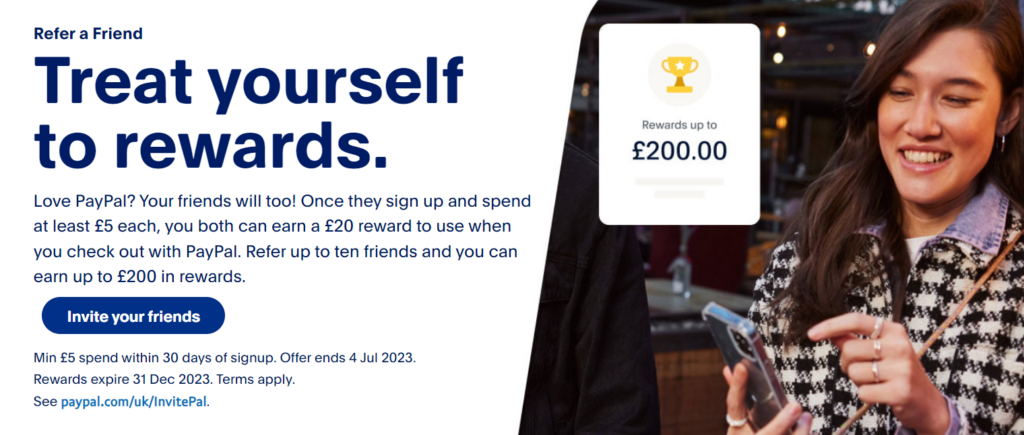
That said, there is an invitation cap and a maximum referral reward amount for users in each market. PayPal did this to create equal opportunities for everyone and manage fraud risks.
Takeaway: Growth strategies should be about loops, not funnels.
Although the actual tactic itself was not a unique one, the underlying growth strategy was something very smart, innovative, and worthy of mentioning.
PayPal optimized the user experience of inviting, accepting the invite, becoming a user, and referring others in a way that made it super easy and appealing for new users to start inviting their own friends too.
What they had in mind was not a funnel of a certain percentage of active users sending invites and a different percentage of invitees signing up.
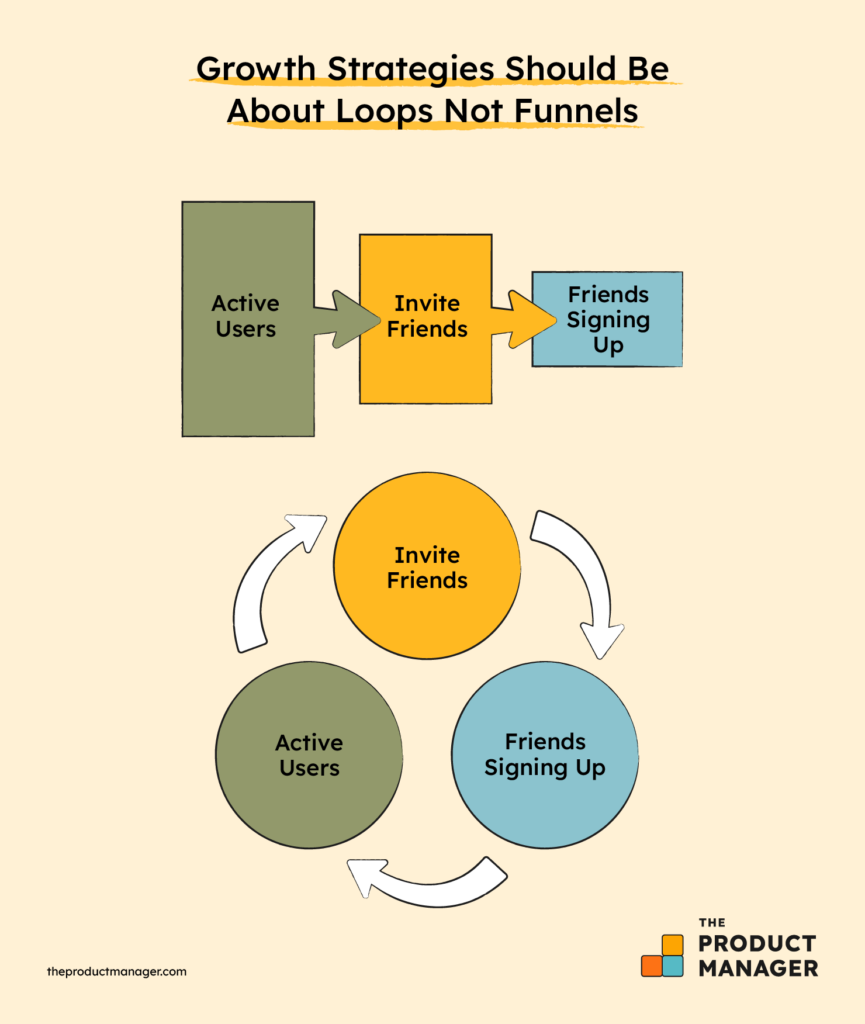
Instead, they wanted to create a loop, where invitees would invite more people and create an effect of virality.
Example #5: HubSpot Academy’s PLG Approach To Increasing Their Certification Rate
This story is my personal favorite because it talks about a growth approach that I consider one of the best—PLG.
This acronym stands for Product-Led Growth. It is a philosophy of growth that puts your product in the center and uses it as your primary driver of acquisition, retention, and monetization.
If you follow the PLG approach, then you're ensuring that your product is so great at delivering the core value to its users, that they will be more than happy to share it with others along with a bouquet of praise about the way it solves their pains.
The product-led growth approach will increase your growth potential by leveraging the following focus areas:
- Increasing core value proposition (e.g. Dropbox's cloud-based storage space).
- Improving activation rate and retention (e.g. MailChimp's easy setup and DuoLingo's gamified "daily challenges").
- Supporting sharing and virality (e.g. Google Docs' collaboration tools).
In the case of HubSpot Academy, they were able to increase the number of completed certifications by adding a simple status indicator that would show the progress for the certifications that the users had not completed yet and mark the completed ones as “done”.
These indicators created a sense of gamification among the users who saw the incomplete courses as a challenge for them to face and accomplish—significantly improving the completion rate.
Takeaway: PLG might be time-consuming, but it offers the most sustainable growth.
I can praise PLG for hours and yes, my opinion about it is a bit subjective, considering that this is the main growth strategy that I apply to my products. So, let me try to be objective and talk about both its benefits and downsides.
Taking the PLG approach to growth is a bit time-consuming, as you will need to do a lot of extensive user research and interviews to understand the pain points of your target audience, where your activation or habit formation sucks, etc. Moreover, you will need to do software development to change your features and your UX to improve your product.
The massive benefit you get, on the other hand, is that a PLG-optimized product becomes a sustainable growth engine that is able to increase your user and customer base in a very predictable and risk-averted way.
Just look at the Dollar Shave Club example above. Despite the massive success, the approach it takes is quite short-term and the acquisition boost diminishes as soon as the virality is gone. Yes, they can make another video, but the chances are slim that you can make viral videos every time, all the time.
With the PLG example, however, the long-term value is hard to beat. By offering a product and user experience that is well-optimized to activate as many users as you can, you can keep them engaged and monetize them with a considerable lifetime value. This happens organically and on a self-serve basis. It means that you are not really spending any money or effort on acquiring individual users. Instead, you are building your “engine” that is able to continuously and predictably activate and monetize people.
Example #6: Airbnb Piggybacking Off Of Craigslist To Boost Reservations
Although this is a story of massive success and creative thinking, I want to frame this as a case of what NOT to do. The story is, of course, about Airbnb and their ingenious strategy of using Craigslist to post their classifieds.
To be more precise, Airbnb added a feature in their platform that would allow property owners to post their Airbnb listing on Craigslist with a single click. Airbnb would create a professional looking and visually appealing classified with images and description of the text.
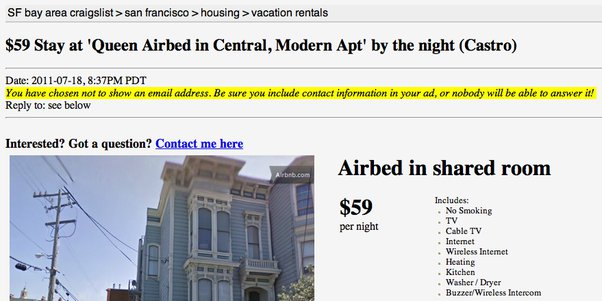
Their hope was that people looking for a short-term rental would see the Craigslist classified and come to Airbnb to do the booking because Craigslist was notorious back then for scams and Airbnb offered secure payments and bookings.
Although it was quite controversial, this strategy proved to be one of the most successful growth hacking techniques for Airbnb—helping them build a massive user base and become one of the leading rental and booking platforms out there.
Surprisingly, Craigslist never sued Airbnb for this. The U.S. Government did accuse them of illegally scraping data off Craigslist, though. Don't do that either.
Takeaway: Take advantage of the existing behavior of your users.
I do not recommend that you piggyback off of other products and platforms, but I do recommend that you consider the core reason behind this controversial strategy.
Back then, Craigslist was the main platform where people were offering their homes and apartments for rent (both short-term and long-term). It was already a well-developed habit and user behavior to go to Craigslist whenever they needed to find a place to rent. Property owners had the same habit too.
So, by letting property owners post on Craigslist, Airbnb also piggybacked off of the user behavior too. Their next smart move was to have a unique value proposition that was absent on Craigslist—secure bookings and payments.
Example #7: Quora’s Outstanding Use Of User-generated Content And SEO To Acquire New Users
Unlike the previous strategy, this one is not controversial and is definitely something that I would recommend anyone consider. As much as I have some qualms with Quora's UX design, I do admire the way they have profited from user-generated content using traditional marketing tactics—content marketing and SEO.
The growth team at Quora realized that the questions users asked on their platform were also the questions people were asking to Google. So, if they could create separate landing pages for each of the questions asked on their platform, and optimize them for hitting a relevant keyword on Google, these pages would soon appear in Google search results.
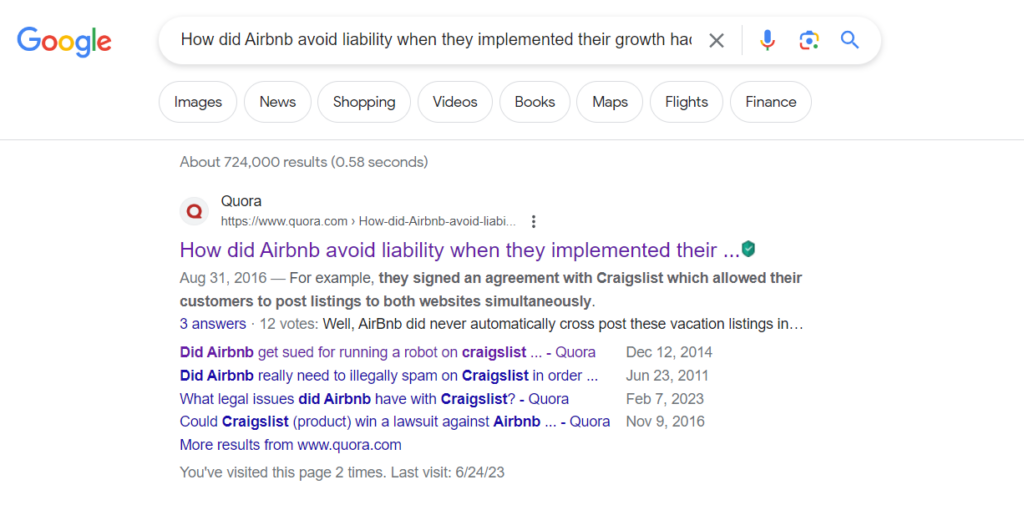
This strategy was successful, as the answers by Quora users soon started appearing as the top-ranking search results for a wide variety of keywords on Google—creating significant organic traffic onto the platform.
Takeaway: SEO is a very powerful tool if you can master it.
Ok, I do believe that ChatGPT, Google’s Bard, and Anthropic will fundamentally change the way we search for things within the next decade. Consequentially, search engine optimization will become something completely different too. However, let’s focus on traditional SEO, as it is still able to generate a lot of quality leads for you.
The reason I like SEO is because of the quality of traffic and leads you get from it. Imagine that you are watching an interesting mini-documentary on YouTube about the business model of low-cost airlines (Sam from Wendover made a great one on this topic) and an ad pops up and asks you to sign up for Uber Eats.
What are the chances that you are hungry at that moment and you want to order takeout? They are probably slim. This is what we call “low intent” people.
Now, imagine that you are looking for an airline ticket from LA to Seattle. You go to Google and type “tickets LA to Seattle” and look at the search results. You have the intention of buying the ticket, so you are a “high intent” person, and whichever website you visit at that moment benefits from their SEO efforts to capture your attention at the right time.
Honorable Mentions
The seven case studies that we cover here were obviously not the only cases when products have successfully applied a growth hacking tactic. So, here are a few honorable mentions worth looking into:
Slack: Apart from being famous as the startup that found a product market fit using the Sean Ellis method, Slack is also a known user of various effective growth marketing tactics, including PLG.
By adding various functionalities to the product and heavily using A/B testing, they were able to do successful optimization of key metrics like their conversion rate, onboarding process success rate, customer acquisition rate, and others. Moreover, Slack comes with a free account letting you experience their value prop before buying.
LinkedIn: The team at LinkedIn was one of the first to do improvised email marketing by taking advantage of your email list on Gmail, Hotmail, and other providers to send out invitations to your friends to come to LinkedIn as new customers and join your group of contacts.
eBay: The ecommerce platform was one of the early users of viral loop marketing strategy by offering free listing bonuses to users who would invitie their friends.
Growth Is A Game Of Evolution, Not Revolution
I want to conclude this list of success stories with a very important advice. Don’t expect your growth hacking efforts to instantly skyrocket your acquisition rates.
Growth is about steadily increasing the average number of new users you are getting every day. The real effect of the best growth hacks appear in the long term, when these small acquisition rate improvements start stacking up.
I hope that you found inspiration in the stories I shared with you. If you have a story of your own, then tell us about it in the comment section below.
Finally, you can get more guides and insights for product people by subscribing to our awesome newsletter.



